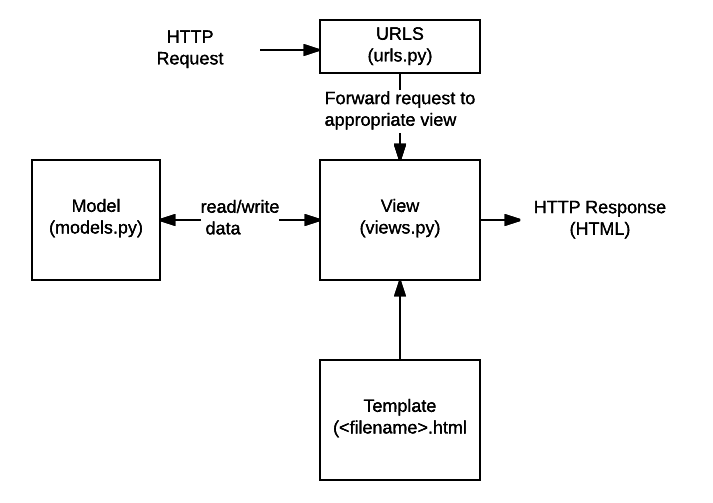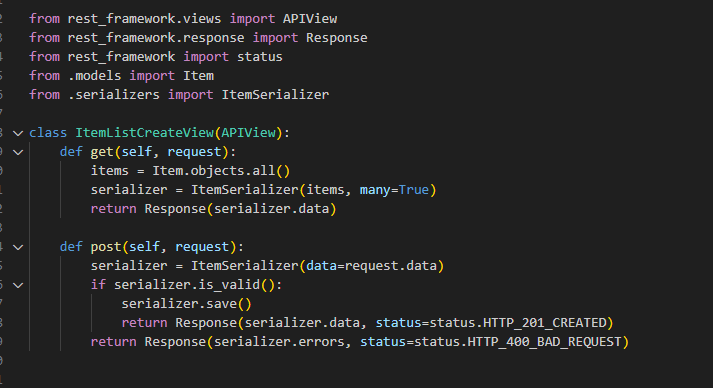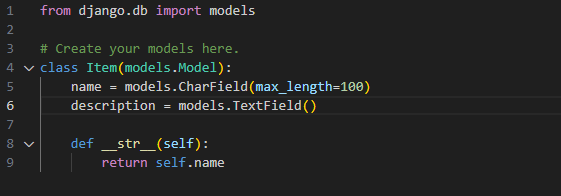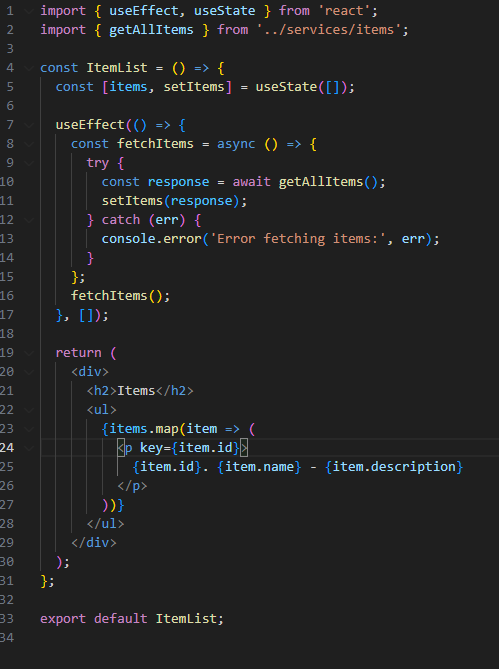Django is a high-level web framework for Python that enables developing dynamic websites more quickly and easily. Written with the “Don’t Repeat Yourself (DRY)” philosophy, it encourages reusable components and less code to write. With robust built-in features like user authentication, database integration, and CRUD operations ready to use out of the box, Django lets the developer concentrate on creating applications instead of rewriting the wheel.
Easy to learn but powerful, Django is a perfect option for those who are new to web development with Python. It gives you a defined structure with fundamental elements such as models, views, templates, and URLs, through which you can learn how contemporary web applications are designed. From building small projects to large-scale production-ready applications, Django provides you with the means to accomplish that in an efficient manner.
Learning Django isn’t simply learning a framework — it’s one step closer to creating real-world applications and unlocking promising professional opportunities in web development.
What is the Django Framework?
Django is a high-level Python web framework that aims to make web development quick, secure, and easy to maintain. Called the “batteries-included framework”, it includes everything you need to create a website — from database handling and user authentication to form management and file uploads.
With its essential entities (models, views, templates, and URLs), Django makes the whole development process easier, allowing you to concentrate on creating your application and not reinventing the wheel. Free, open source, and backed by a robust community with great documentation, Django is easy for beginners but capable of developing scalable, production-deployment web applications.
Django web applications typically group the code that handles each of these steps into separate files:

Django web applications tend to organize the code that manages each of these steps in a different file:
- URLs: Although requests from every individual URL can be handled through a single function, it is more maintainable to define a unique view function to serve each resource. A URL mapper is employed to remap HTTP requests to the corresponding view depending on the request URL. The URL mapper can also match specific patterns of strings or numbers that occur in a URL and pass them to a view function as arguments.

- View: A view is a request-handling function, taking HTTP requests and returning HTTP responses. Views retrieve required data to fulfil requests through models, and leave the response formatting to templates.

- Models: Models are Python classes that specify the shape of an application’s data, and offer ways to handle (add, change, delete) and query records in a database.

- Templates: A template is a file containing text that specifies the form or structure of a file (for example, an HTML page), with placeholders to hold actual content. A view can produce an HTML page at runtime by using an HTML template and filling it with data from a model. A template can be applied to specify the structure of any file type; it is not limited to HTML.

Why Use Django Framework?
Django is an easy-to-learn yet robust Python web framework that accelerates web development and is secure. It has authentication, an admin interface, ORM-based database management, forms, and robust security features — all available out of the box to be used.
Extremely scalable and adopted by top firms such as Instagram, Spotify, and Dropbox, Django works for small projects and large, high-traffic sites alike. With its elegant MVT architecture, great documentation, and smooth integration with Python’s enormous libraries, Django not only makes rapid development easy but also supports advanced applications such as machine learning, image processing, and scientific computing.
Key Features of the Django Framework:
Django is a robust Python framework for developing secure, scalable, and maintainable web applications. Its key features are:
- Complete – Adheres to the “batteries-included” philosophy, providing all that you want in the box with seamless integration and excellent documentation.
- Flexible – Can produce nearly any kind of website (blogs, CMS, social networks, news sites) and supports various databases, client-side frameworks, and output formats (HTML, JSON, or XML).
- Safe – Offers protection against regular vulnerabilities (SQL injection, XSS, CSRF, clickjacking) and secure password management with hashing.
- Scalable – Designed with a shared-nothing architecture, which allows for easy support of high traffic by adding resources at any level.
- Maintainable – Fosters clean, reusable code by the use of the DRY principle and organizes projects using the Model-View-Template (MVT) pattern.
- Portable – Can run on various platforms (Linux, Windows, macOS) and has broad support from hosting providers.
Where did it come from?
Django was first created during 2003-2005 by a web development team tasked with building and maintaining newspaper sites. Having built a variety of sites, the team started to pull out and reuse plenty of boilerplate code and design patterns. This boilerplate code started to take the form of a generic web application framework, which was open-sourced in July 2005 as the “Django” project.
Django has continued to evolve and expand, from its initial milestone release (1.0) in September 2008 to version 5.0 of late 2023. Every release has provided new features and bug fixes, from the introduction of support for new database types, template engines, and caches, right up to the inclusion of “generic” view functions and classes (which lower the amount of code that programmers must write to accomplish a range of programming tasks). Django is today a healthy, community open source project, with thousands of users and contributors. Although it still retains some traces of its roots, Django has grown into a multifaceted framework that can build any kind of website.
Uses of Django:
Django is a general-purpose web framework that is utilized across various industries and applications. Below are some typical uses:
- Content Management Systems (CMS): Django is perfect for creating bespoke CMS platforms because it is highly modular and flexible.
- E-commerce Websites: Sites such as e-commerce sites take advantage of the scalability and solid security features of Django.
- Social Networking Sites: Django’s high-traffic capability makes it ideal for social networking applications and community websites.
- Data-Driven Applications: With its effective ORM and database control, Django is ideal for the construction of applications based on big sets of data.
- API Development: Django combined with Django REST Framework (DRF) makes it easy to create high-level and scalable APIs.
- Scientific Computing Platforms: Django finds application in platforms that demand sophisticated data analysis and visualization.
- News & Publishing Platforms: Due to its effectiveness in handling large amounts of content, it is a favourite among news sites and online publications.
- Educational Platforms: Most e-learning sites and educational platforms are developed using Django due to its scalability and security.
Conclusion:
Django is more than just a web framework — it’s a complete toolkit that simplifies development, keeps projects secure, and scales as your needs grow. Its beginner-friendly design, powerful built-in features, and strong community support make it an excellent choice for anyone starting their journey in web development with Python. By choosing Django, you’re not only learning a framework but also building a solid foundation for creating efficient, secure, and professional-grade applications.
